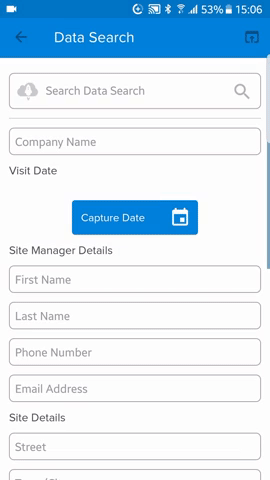Here we touch on some of the main needs of a punch list and how they can be made simple by using some common features available at your disposal. Punch forms are designed to be quick, precise and to the point and achieving this can be a task in itself. Understand how Array can help you create a punch list that makes it easy for everyone.
No two projects are the same
So, What is a punch form?
Basically, a list of outstanding items, duties or tasks left to complete a project, sometimes just a general day to day overview of what has occurred or what has been completed. No two projects are the same, these forms always differ in some way. Making a generic punch form can be harder than it first seems.
With paper punch forms you are confined to the questions on the form. This can cause pain when timescales are changing, planning processes move/change or information differs from the last. Completing and submitting a paper form for each time this occurs just adds more paper to the pile.
Creating a mobile punch form will eliminate paper and cut down recourse used. Mobile forms don’t just make it easy to complete and submit information but also make it available in multiple places to multiple users, in real time, right there in your hand. This is why mobile forms make so much sense for punch forms.
The "Perfect" Form
When creating your perfect punch form you need to remember the main goals for your project and the key data you need to collect. In some situations, data is not available or cannot be collected yet and you may, in fact, want to collect other data in its place rather than collection no data at all and leaving the required section blank.
allowing the users to get on with the important tasks
Creating the perfect form is not something that can just appear from thin air, you need to know what your process, the important data you need and how you want to see that data. Array can help you do this with a few simple steps eliminating the need for human interaction once a project/campaign is completed.
Starting at the top. You may want to record data such as location, date, teams or managers who run the project but each time you turn up to a location it is an arduous process of inputting all this each time even know it has already been stored from a previous visit. Using Array capabilities, you can call upon previous data submitted with data search. Data Search will eliminate the need for repetitive information to be input each time a visit is conducted and instead search and select the desired location, outlet or whatever may be to injected directly into the form allowing the users to get on with the important tasks of completing the form for its sole purpose of reporting on a project, campaign or just simply stock and supplies.

Combined with Data Search, Logic on a form can be one of your most powerful elements allowing you an effective way of directing someone to complete only the questions relevant to the task that is performed.
For example, you may visit a building site where the site manager was or was not available, a question on your form will ask “was the site manager available?” where you will either select yes or no. Selecting ‘yes’, another question will appear asking for the “Site managers name” and “contact details”. If ‘no’ is selected then these fields would stay hidden and not be required. This is a great way to keep forms concise allowing questions to appear only when they are necessary to be answered.
allowing questions to appear only when they are necessary
In certain situations, it may be required that evidence is needed for either a visit or what is being reported upon. To do this there are a few different media types that you may have to collect. It could be simply just an image or a video but there may be some others you need too. Array offers media input of images that can be drawn upon or images that can be uploaded from the device, documents can be uploaded and attached to the file, signatures can be collected and audio can be recorded. These can be great tools when relating to a past project or for evidence that may be needed.
Determining which media evidence you want to collect will determine on the use case for your punch list but they can be a great way to get information across quickly and concisely without having to write detailed descriptions or go into extreme depth with the questions on your forms.
So your Punch List has been completed and you are about to hit submit to send it to Array for reporting, but you want the site managers details you completed earlier to receive a copy too… Array allows you to set this feature when the form is being built, you can send a copy of the form to whoevers details you input in the email field earlier. Combined with Logic you can apply a selection to determine who you want the form to be sent to from a dropdown list in the form. You may want to send it to the main office, your manager and possibly any other departments that require the information, so again we would use logic to apply the email copy to each location allowing you to select by ticking a box to suggest that's where the email should be sent, if set correctly emails should be sent to these recipients when the form is submitted.
Overview
Mentioned above are only some of the features that can be used to make you punch forms a much more productive document and less of a time-consuming document. Other features that can benefit include pre-populating forms, tables, drop-down selections or even Flows & Bots. To see if these work for you, sign up for our 14-day free trial here
To find out more about the products and features we have, contact a member of the team online where we can arrange an appointment or simply just provide more information.


